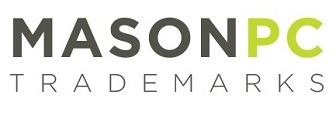
Distinctiveness is the heart of a valid trademark.
At its core, a trademark must actually distinguish, or be adapted to distinguish the goods and services of one provider from those of others. It is for this reason that generic terms are not protectable as trademarks.
Generic terms are signs (e.g. words or logos) that communicate the type of product or services being offered. They do nothing more.
The word “cereal” is a classic example. Cereal is defined as “a breakfast food made from roasted grain, typically eaten with milk.” Several companies manufacture cereal, and each one of them is entitled to use the generic word to describe their goods.
Under Canadian law, generic terms cannot be the subject of trademark protection. They are not considered to be inherently distinctive and will not acquire distinctiveness. After all, if one trader is adorned with trademark rights over a generic term, the resultant effect will be akin to granting a product or service monopoly to that trader.
What is Genericism?
To the chagrin of brand owners, a trademark that was once distinctive and valid can become generic. A trademark becomes “genericized” if, in the mind of the public, it becomes synonymous to a type of product or service, rather than being a brand of the actual product or service. Essentially, the trademark morphs into a name that the public uses to describe the entire product class.
Ironically, the more popular and successful brands tend to be more susceptible to genericism. These brands become particularly exposed when they, and the products with which they associate, acquire substantial market dominance.
Examples of trademarks that have succumbed to genericism in one or more countries include:
Thermos for insulated beverage containers
Pampers for diapers
Aspirin for the pain medication
Escalator for mechanical stairs
Jacuzzi for hot tubs
Videotape for tapes used to record and reproduce sounds and images
Cutex for nail polish
Cellophane for the transparent cellulose film
Trampoline for equipment used for springboard and landing
Dry Ice for CO2 used a cooling agent
Kerosene for the light fuel oil used in jet engines, domestic heaters and lamps
Laundromat for coin operated washing facilities
Linoleum for floor covering
Zip Code for postal addresses
Zipper for fasteners
In today’s world, we typically will not reference “mechanical stairs”. Rather, we use an “escalator” to move easily between different floors in a shopping mall. Similarly, we visit the “laundromat” as opposed to a “coin operated laundry facility”. We don’t use “insulated beverage containers” to keep our morning beverages warm. Instead, we might use a “thermos”. On vacation, we enjoy the “jacuzzi”, rather than the “hot tub”. In Jamaica, parents often use “pampers” on their babies, not necessarily “diapers”. Women in Jamaica are more likely to use “cutex” as opposed to “nail polish”. These are classic examples of genericism.
Sadly, where a trademark becomes genericized, the owner loses the right of exclusivity. In other words, the trademark is no longer protectable as it descends into the public domain, free for all. A more dramatic way to express this, is that the trademark has succumbed to its injuries and has died.
Avoiding Genericism

Businesses should plan their marketing and advertising with this in mind. At the outset, guidelines should be established as to how a company’s trademarks will be used and displayed in commerce.
It is advisable to consistently use trademark markings. The ® symbol should accompany registered trademarks whereas the TM symbol accompanies unregistered brands. This sends a message to consumers that they are engaging with an actual trademark.
Brand owners should insist on proper grammatical usage of their trademark in marketing materials. In particular, trademarks should not be used as nouns in sentences. They are to be used as adjectives. For example, marketing personnel will be well advised to reference “Kleenex® tissues” rather than “Kleenexes”. Similarly, it would be prudent to say “Huggies® diapers”, rather than “Huggies”.
KIMBERLEY FRITH-DELISSER
In these examples, note the careful use of trademark markings to distinguish the actual trademarks from the generic product names.
Avoid variations such as spelling changes, exclamation marks, apostrophes and abbreviations. These variations might signal an invitation to the public to misuse the trademark. If the brand is “Just Do It”, it is to be consistently used as such, since it really isn’t “Just Do It!!!!!!!!!!!”.
If a trademark is being associated with a new invention, the inventor should consider developing a generic term for the product. Such a term is often referred to as a “generic descriptor” and is frequently used immediately after the trademark to describe the product or service. An example of such a creation is the term “brand fasteners” in “Velcro® brand fasteners” used in association with Velcro branded hook and loop fasteners. Another example is “facial tissues” in “Kleenex® facial tissues”.
Another strategy is to use the word “brand” immediately after the trademark. This helps to define the mark as a brand/trademark as opposed to a generic name. Johnson & Johnson’s “I am stuck on Band-Aid brand” jingle is a good example. In 2017, Velcro Company released this video as part of its campaign to protect its Velcro brand against genericism. The aim of the video was for the public to stop referring to fasteners as “Velcro” but to instead refer to them as “hook and loop fasteners”.
Similarly, Xerox Company went about a public educational campaign aimed at stopping the public from substituting its brand name “xerox” for the generic word “copy”.
How we help
Brand policing will always be critical to avoiding genericism. Businesses should periodically conduct searches online, social media and in the actual marketplace. The first sign of brand misuse should be reported to an experienced trademark lawyer, so that proper enforcement measures can be implemented. In case this all appears innocuous, there are several companies that have had to institute massive campaigns to try to prevent their trademark from becoming genericised.
The truth is that genericism hardly occurs overnight. It usually happens over a period of years. As such, once a trademark succumbs to genericism it is virtually impossible to rescue it.
As a takeaway, businesses should implement proper plans and strategies from the get-go. Setting the stage for proper brand use, through clear guidelines and marketing consistency is likely to educate to use the brand properly.



